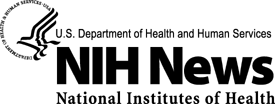 |
|
|
FOR IMMEDIATE RELEASE:
June 22, 1999 #99-10 NIEHS CONTACT:
Bill Grigg (301) 402-3378 22 Jun 1999: Science Panel Endorses New Non-Animal Test to See If Chemicals Will Burn, Corrode Skin and EyesFor the first time, a new federally sponsored panel of scientists has endorsed the use of a non-animal test to determine-for safety and regulatory purposes, and for labeling-whether a chemical is likely to burn or corrode human skin. The new test can often replace a method in which a chemical or chemical mixture is placed on the intact skin of a laboratory animal. The results of the review of the new non-animal test were announced today by the National Institute of Environmental Health Sciences (http://www.niehs.nih.gov), the National Toxicology Program (http://ntp.niehs.nih.gov/) and 13 other federal agencies that support the Interagency Coordinating Committee on the Validation of Alternative Methods (http://iccvam.niehs.nih.gov/), an organization established in 1997. This ICCVAM-sponsored scientific review, provides a basis for decisions by the regulatory agencies about how the test will be used in their decision making. The panel said the new method can fully replace the use of animals for testing corrosiveness and irritation in some cases, while in others, only a single animal is required to confirm a chemical's corrosiveness. William Stokes, D.V.M., the National Institute of Environmental Health Sciences' associate director for animal and alternative resources, said, "Current regulations usually require three animals for each chemical that is evaluated for skin corrosivity and dermal irritation. Since there are more than two thousand chemicals introduced each year, this could result in a considerable reduction in the use of laboratory animals to identify corrosives." Last year, Dr. Stokes was recognized by the Humane Society of the United States (http://www.hsus.org/) Skin corrosiveness testing is conducted to ensure that chemicals and products are properly labeled to alert consumers and workers to take precautions to prevent chemical burns to the skin and eyes. In the new test, developed under the trade name Corrositex® (http://iccvam.niehs.nih.gov/methods/dermal/corrode.htm), a chemical or chemical mixture is placed on a collagen matrix barrier that serves as a kind of artificial skin. Once it penetrates the barrier, the chemical causes a color change in a liquid detection system composed of pH indicator dyes. The time it takes for a test chemical to penetrate the barrier and produce a color change in the detection system is compared to a classification chart to determine corrosivity. In order to develop a scientific consensus on the usefulness and limitations of the new test, panel members evaluated all available information and data to determine the extent to which each of the ICCVAM criteria for validation and acceptance of new test methods was addressed. Panel chair Robert Scala, Ph.D., said, "We concluded that Corrositex® may be used as part of a tiered testing strategy for assessing the dermal corrosive potential of chemicals, or as a stand-alone alternative to the in vivo (live animal) corrosivity test when used in specific testing circumstances for acids and bases. We are also recommending that since false positive or negative test results are possible, there should be ample opportunity for confirmatory testing." Dr. Scala is a former president of the Society of Toxicology (http://www.toxicology.org/) This is the second expert panel to be convened by ICCVAM for the review of a new toxicological test method. The first review resulted in the validation of a test called the Murine Local Lymph Node Assay (http://www.niehs.nih.gov/news/releases/news-archive/1998/animalt.cfm) that uses one-third to one-half fewer animals to determine the potential of chemicals to cause allergic dermatitis. Corrositex® is sold by In Vitro International of Irvine, Calif. |
|


